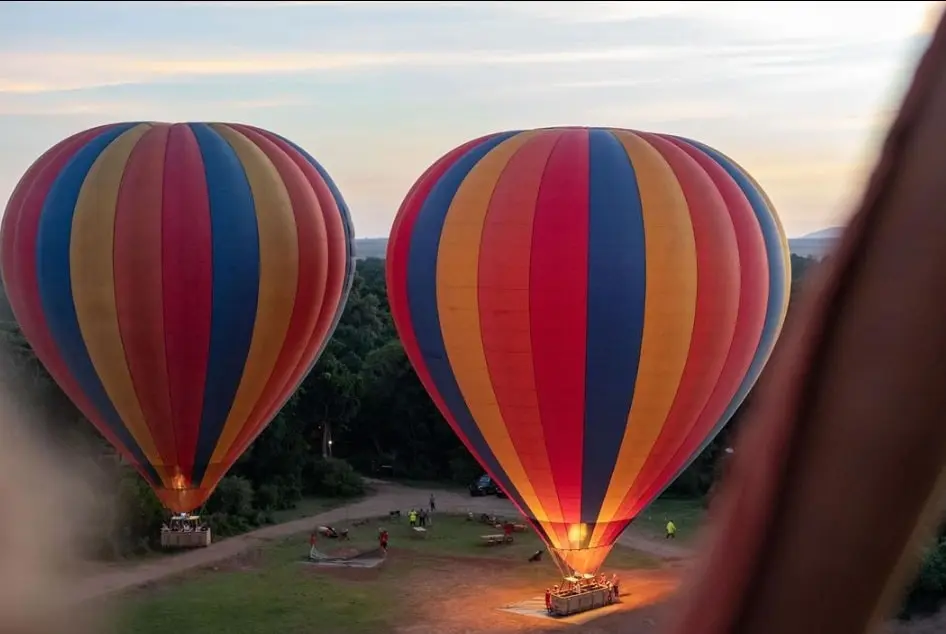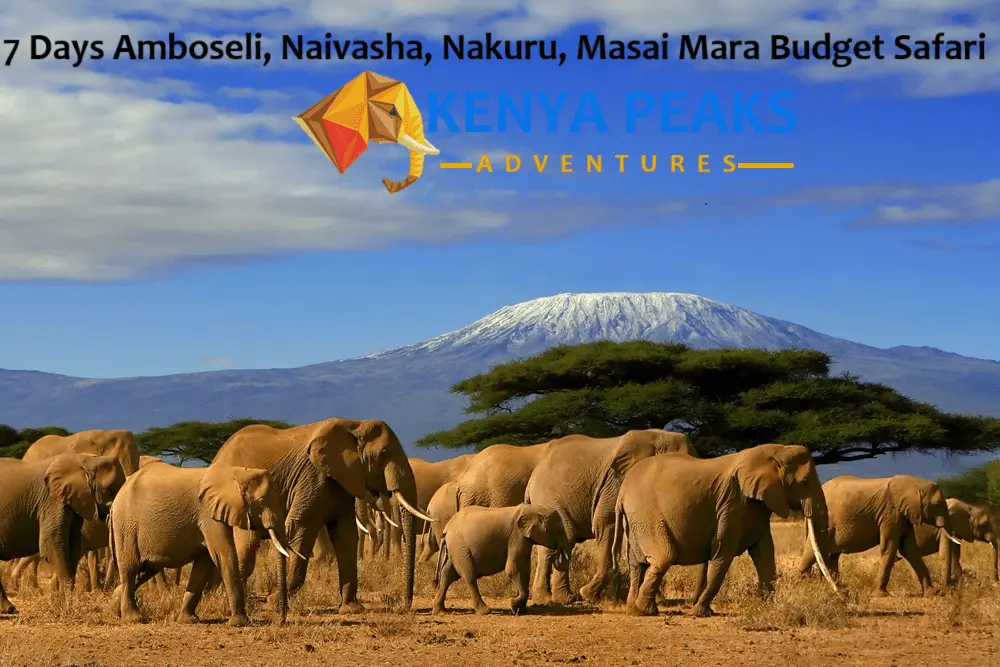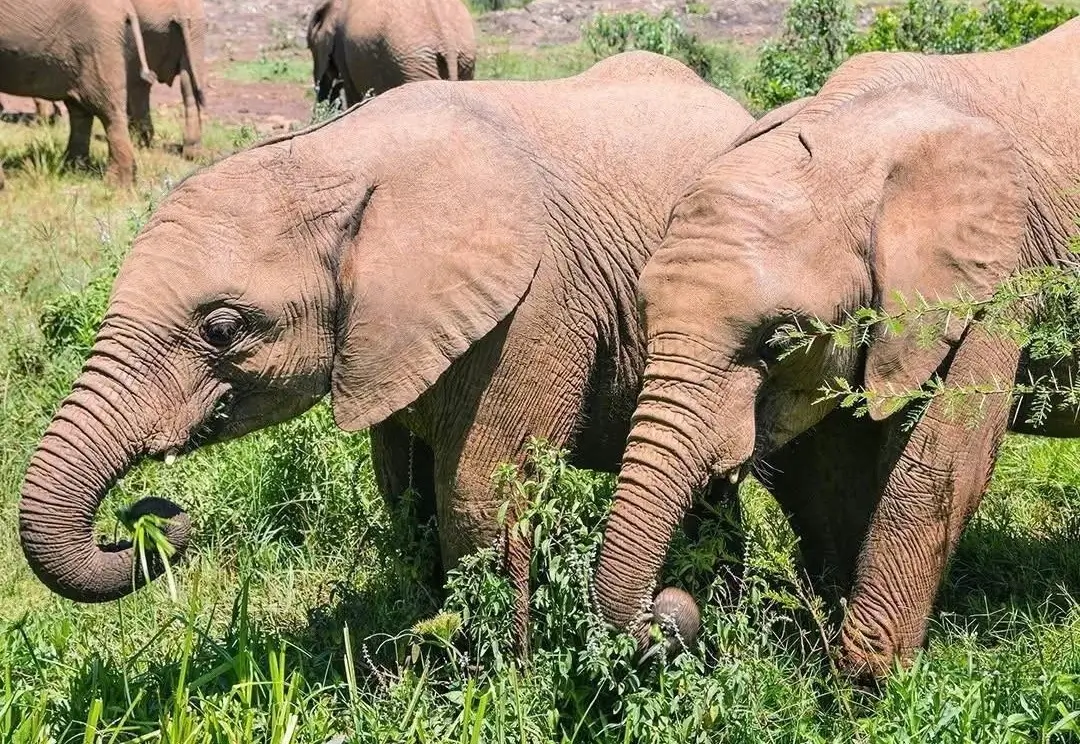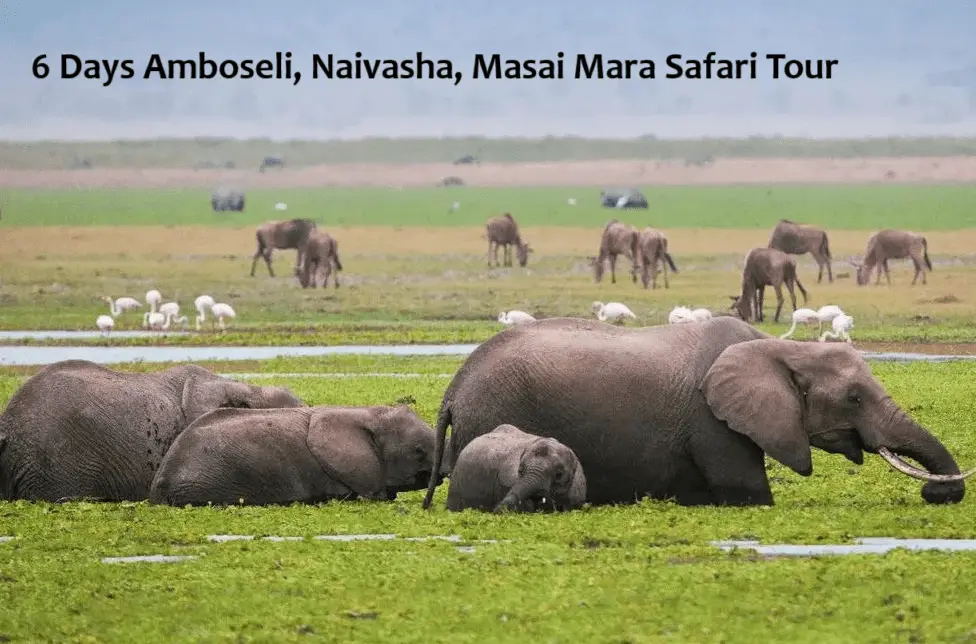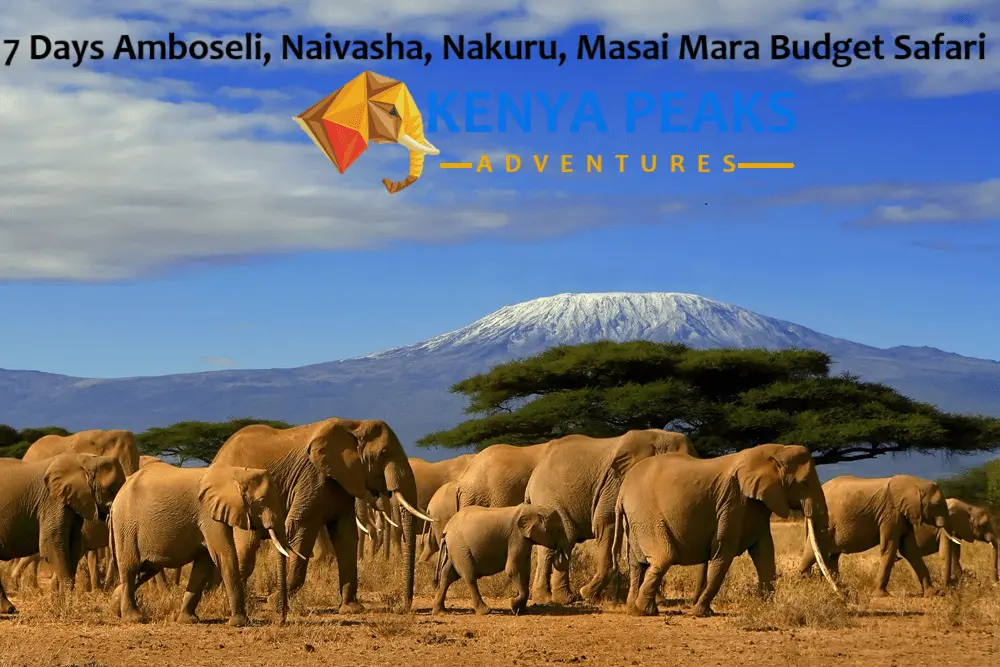Amboseli National Park is a national park in Kenya that is
located in the southern part of Kenya near the border with Tanzania. The national
park is known for its large herds of elephants and breathtaking views of Mount
Kilimanjaro, Africa's highest peak.
Amboseli National Park covers an area of 392 square kilometer(151 square miles).
Established in 1974 and managed by the Kenya Wildlife Service, Amboseli offers
a diverse habitat that includes dried lakebeds, wetlands, savannah, and
woodlands.
This rich ecological variety, combined with the cultural
experience of visiting the Maasai communities, makes Amboseli a must-visit for
nature enthusiasts and adventure seekers alike.
Location and Geography
Amboseli National Park is located in the southern part of
Kenya, bordering Tanzania. This strategic location offers visitors stunning
views of Mount Kilimanjaro, which lies just across the border in Tanzania.
The park's geographical setting provides a unique blend of
ecosystems, including the dry lakebed of Lake Amboseli, wetlands with sulfur
springs, open savannah, and woodlands. These diverse habitats support a wide
range of wildlife and plant species, making Amboseli a key destination for ecological
and safari tourism.
Position in Southern Kenya
Amboseli is positioned in the Loitoktok District, which is
part of Kajiado County. It lies approximately 240 kilometers southeast of
Nairobi, the capital city of Kenya. The park's proximity to Tanzania enhances
its appeal, as visitors can easily incorporate it into a broader East African
safari itinerary.
Bordering Tanzania
The park's border with Tanzania adds a distinctive feature
to its landscape, with the iconic Mount Kilimanjaro dominating the horizon.
This geographical landmark not only provides a stunning backdrop for wildlife
viewing but also influences the park's climate and ecology.
The underground water sources that feed Amboseli's wetlands
are filtered through the volcanic rock of Kilimanjaro, creating lush habitats
in an otherwise dry region.
Size and Climate
Amboseli National Park spans an area of 392 square kilometers
(151 square miles). Despite its relatively small size compared to other African
parks, Amboseli's varied terrain and rich biodiversity make it a significant
natural reserve.
Area Covered
The park's 392 square kilometers encompass a wide range of ecosystems,
from the dry, dusty plains that give Amboseli its name, to the verdant wetlands
fed by underground springs. This mix of environments supports a diverse array
of wildlife and plant species, offering visitors a comprehensive safari
experience within a compact area.
Tropical Monsoon Climate
Amboseli experiences a tropical monsoon climate
characterized by distinct wet and dry seasons. The climate is influenced by the
park's altitude and its proximity to Mount Kilimanjaro. Daytime temperatures
can be quite warm, often reaching around 28°C (82°F), while nights can be cool,
with temperatures dropping to about 15°C (59°F).
- Dry
Season: The dry season, from June to October and December to February,
sees the landscape transform into dusty plains. This period is ideal for
wildlife viewing, as animals gather around the remaining water sources.
- Wet
Season: The wet season, occurring from March to May and November to
December, turns the park into a lush, swampy area. These rains replenish
the wetlands and create a vibrant, green environment, attracting migratory
birds and rejuvenating the flora.
History and Name Significance
Amboseli National Park has a rich history and cultural
significance that enhance its allure as a premier safari destination.
Understanding the park's origins and the meaning behind its name provides a
deeper appreciation for its unique attributes and cultural heritage.
Establishment in 1974
Amboseli National Park was officially established in 1974.
Prior to its designation as a national park, the area was a Maasai Reserve. The
establishment aimed to protect the unique ecosystems and the diverse wildlife
species that inhabit the region. Since its inception, the park has been managed
by the Kenya Wildlife Service, which oversees its conservation and tourism
activities.
Meaning of "Amboseli"
The name "Amboseli" is derived from a Maasai word
meaning "salty dust." This name reflects the park's characteristic
dry, dusty plains, especially during the dry season when the landscape becomes
arid and the soil is laden with saline dust. The Maasai people, who have lived
in the region for centuries, named it after this distinctive environmental
feature.
UNESCO World Heritage Site Status
In recognition of its exceptional biodiversity and cultural
significance, Amboseli National Park was designated as a UNESCO World Heritage
Site in 1991. This status underscores the global importance of the park's
natural and cultural heritage, highlighting the need for its ongoing protection
and conservation.
Wildlife and Bird Species
Amboseli National Park is renowned for its rich
biodiversity, offering visitors an unparalleled opportunity to observe a wide
variety of wildlife and bird species in their natural habitats. The park's
diverse ecosystems support a range of animals, from the iconic African
elephants to numerous bird species.
Major Animal Inhabitants
Amboseli is particularly famous for its large herds of
African bush elephants. The park is home to over 1,500 elephants, making it one
of the best places in Africa to observe these majestic creatures up close.
Other notable wildlife species include:
- Cape
Buffalo: Often seen grazing in the park's open plains.
- Impala:
Graceful antelopes that are commonly spotted around the park.
- Lion
and Cheetah: Predators that roam the savannah in search of prey.
- Spotted
Hyena: Known for their distinctive calls and social behavior.
- Masai
Giraffe: Towering above the acacia trees, these giraffes are a common
sight.
- Grant's
Zebra and Blue Wildebeest: Frequently seen in large herds during the
dry season.
Bird Species Diversity
Amboseli National Park is a birdwatcher's paradise, with
over 600 bird species recorded within its boundaries. The park's wetlands and
diverse habitats attract a variety of birds, including:
- Steel-blue
Whydah: Known for its striking plumage and distinctive calls.
- Taveta
Golden Weaver: Often seen building intricate nests near water sources.
- Yellow-necked
Spurfowl: Commonly found in the park's savannah areas.
- Lesser
Flamingo: Flocks of these pink-hued birds can be seen in the wetlands.
- Hartlaub’s
Bustard and African Swamp Hen: Among the many other species that call
Amboseli home.
Cultural Experiences
Amboseli National Park is not only a haven for wildlife
enthusiasts but also offers rich cultural experiences that provide insight into
the traditional lifestyles of the local Maasai communities. Visitors can
immerse themselves in the unique cultural heritage of the region, making their
visit to Amboseli even more memorable.
Visiting Maasai Communities
The Maasai people, known for their distinctive customs and
dress, have lived in the Amboseli region for centuries. Their culture is deeply
intertwined with the landscape and wildlife of the area. Visitors to Amboseli
have the opportunity to visit Maasai villages, where they can learn about
traditional Maasai ways of life, including their cattle-herding practices,
rituals, and crafts.
- Traditional
Dance and Music: Witnessing a Maasai dance performance is a highlight
for many visitors. The Maasai are known for their energetic jumping dance,
called "adumu," and their rhythmic songs.
- Handicrafts
and Souvenirs: Maasai women are skilled artisans who create beautiful
beadwork and jewelry. These handicrafts make unique souvenirs and support
the local economy.
- Guided
Village Tours: Local guides can take visitors on tours of Maasai
villages, providing insights into their homes, social structures, and
daily activities. This experience offers a deeper understanding of the
Maasai's harmonious relationship with the natural environment.
Seasons and Climate
Understanding the climate and seasonal changes in Amboseli
National Park is crucial for planning a visit. The park experiences distinct
dry and wet seasons, each offering a unique perspective on the landscape and
wildlife.
Dry Season
The dry season in Amboseli occurs from June to October and
again from December to February. During this time, the landscape transforms
into dusty plains, and water becomes scarce. This season is ideal for wildlife
viewing, as animals gather around the remaining water sources, making them
easier to spot.
- Advantages
of the Dry Season: Better wildlife visibility, especially around
waterholes. The dry conditions also make it easier to navigate the park's
trails.
- Landscape
Changes: The arid conditions highlight the park's dramatic scenery,
with Mount Kilimanjaro often visible in the clear skies.
Wet Season
The wet season spans from March to May and again from
November to December. Rainfall during these periods revitalizes the park,
turning it into a lush, green environment. The rains fill the wetlands and
create a vibrant habitat for birds and other wildlife.
- Advantages
of the Wet Season: The landscape is at its most beautiful, with
blooming vegetation and abundant birdlife. The wet season is also a great
time for birdwatching, as migratory species visit the park.
- Challenges:
Some areas may become difficult to access due to muddy conditions, and
wildlife can be more dispersed.
Access and Transportation
Reaching Amboseli National Park is relatively
straightforward, with various options available for visitors coming from
different parts of Kenya and beyond.
Road Access
Amboseli is accessible by road from major cities like
Nairobi and Mombasa. The drive from Nairobi takes approximately four hours,
covering around 240 kilometers. The roads are generally in good condition, but
it is advisable to use a 4x4 vehicle, especially during the wet season.
- Nairobi
to Amboseli: The most common route is via the Nairobi-Mombasa Road,
turning off at Emali and then heading south to Loitoktok.
- Mombasa
to Amboseli: The journey from Mombasa involves driving through Voi and
Taveta, then entering the park from the eastern side.
Air Access
For those preferring to fly, Amboseli National Park has
several airstrips that accommodate light aircraft. Flights from Nairobi's
Wilson Airport to Amboseli typically take around 45 minutes.
- Amboseli
Airstrip: Located within the park, offering quick access to lodges and
camps.
- Charter
Flights: Available from various air operators, providing flexible
travel options for visitors.
